The Kemtrak DCP007 delivers highly accurate optical measurements with minimal maintenance and low cost of ownership.
With each DCP007 equipped with two application specific wavelengths, the DCP007 can be configured for single, dual or referenced wavelength measurement. Referenced wavelength measurement can be weighted to correct for disproportionate absorbance at the primary and reference wavelengths. Strong correlation and agreement exists between offline laboratory sample tests and online DCP007 measurements to give users high confidence in the process values reported while contributing to process quality and efficiency.
Four variants of the DCP007 are available – UV, VIS, NIR(L) and NIR(H). The UV, VIS and NIR(L) variants all utilize long life LED light sources. UV light sources are rated for >20,000 hours, while VIS and NIR(L) light sources are guaranteed for life. The NIR(H) unit uses a Peltier thermopile to generate the wavelengths needed for operation. The DCP007 automatically controls light energy output from its light sources at the optimum level for maximum measurement performance. Constant checking of the light output and the dark current through the photodetector components ensures drift free measurement over long periods of time without compromising sensitivity.
Cleverly designed amplification stages around the photometric detection circuitry of the DCP007 allows for linear absorbance performance up to 3A and an overall measurement range of up to 5A. This impressive measurement range allows for application in high absorbance applications without compromising process flow rates. Where differential measurements are made, the depth of absorbance available improves and extends measurement capability.
When used in reference mode, the DCP007 compensates for both optical window buildup and the presence of solids/turbidity in the measurement stream.
Each photometer consists of a DCP007 electronics unit configured for wavelength, an inline flow cell or probe with the optimum optical pathlength for the application and a pair of high quality fiber optic cables.
High reliability ensures that maintenance requirements are very low and cost of ownership is one of the most attractive amongst inline optical instruments in the marketplace today. Furthermore, while each instrument is carefully configured to suit each and every application, change to repurpose the instrument to another application in the field is a quick and simple task.
Learn how color and concentration photometers work and how easy they can be to calibrate:
SOUTH FORK INSTRUMENTS IS AN INDUSTRY LEADER IN DEVELOPING PHOTOMETRIC ABSORBANCE AND ANALYSIS SOLUTIONS ACROSS A WIDE RANGE OF INDUSTRIES.
For applications ranging from manufacturing and water analysis to groundbreaking scientific research, South Fork Instruments can assist you in developing cost-effective photometric measurement systems specially tailored to your needs.
KEMTRAK DELIVERS ACCURATE MEASUREMENTS OF COLOR & CONCENTRATION, EVEN IN CHALLENGING PROCESS FLUIDS
Do you have any of these concerns?:
ACCURACY
"We frequently see measurement errors due to window fouling."
Window fouling is a problem in many absorbance measurement applications and leads to measurement drift. In referenced measurement mode, Kemtrak absorbance photometers constantly check the reference wavelength signal. Increasing absorbance measurement in the reference channel due to window fouling is used to correct the primary wavelength measurement by an equivalent amount, keeping the measurement accurate and drift free.
"We are seeing measurement drift in our photometer due to changes in the light source intensity."
A common problem with light from standard filament lamps and gas arc lamps is that it will change over time as the lamps age. As the light output goes down, the measurement in an absorbance photometer will increase because less light looks like more absorbance to the instrument. Kemtrak DCP007 absorbance photometers control light energy output from their internal light sources at a fixed level for drift free measurement performance. In addition to the constant checking of the light output, Kemtrak instruments also measure dark current levels through photodetector components to remove instrument baseline drift due to ambient temperature change effects. The net result is drift free absorbance measurement over exceptionally long periods of time.
Measurement Noise
"We get a lot of noise in our measurements due to air entrained in our process fluids."
Aeration is the number one interfering factor in absorbance photometer performance. In absorbance systems, it can measurement noisy and creates errors. Extreme aeration can create scattering of the incident light signals and caue measurement failure. Sometimes the issue is other equipment in the line and sometimes it is the process itself. There are several strategies that can be used to improve measurements being disturbed by aeration, things like:
- Suppressing aeration in the flow stream by increasing line pressure
- Remounting the optical cell away from cavitation generators such as valves and other pipeline components
- Repairing pump seals
Other strategies can involve sample and hold systems where a representative sample is drawn into the sample cell and held for a period while it settles before measurement.
Whatever the problem, South Fork Instruments can work with you to devise a solution that delivers accurate and reliable photometer performance.
CHALLENGING APPLICATIONS
"We've been exploring different concentration measurement techniques, including photometers, but we're not sure they're the right fit for our application."
Kemtrak DCP007 absorbance photometers are specifically designed for measuring process color and concentration inline and in real time. Some absorbance process photometer brands are limited by temperature, pressure and cable length constraints and this can limit use in some applications. Not so with Kemtrak instruments. Kemtrak units are fiber optic based with no sensitive electronic or electrical parts mounted at line that can be damaged by high temperatures. A wide range of measurement cells offers many solutions for high pressure while the inherent low loss of the rugged fiber optic cables used means long lengths can be used to connect cell to electronics. Each DCP007 consists of an advanced electronic unit, with a light bench constructed using high-performance light source technology, a pair of rugged industrialized fiber optic cables, and an in-line flow cell wear-resistant sapphire windows. For applications where an in line flow cell is not practical, we can offer third party insertion probes as an alternative. Kemtrak absorbance photometers are a definite fit for your application.
DCP007 photometers are used in many industries, including chemical, oil and gas, food and beverage, biotech, pharmaceutical and water.
FLEXIBILITY
"We need a photometer that can be configured to measure process fluids with significant variations in concentration."
With cleverly designed measurement circuitry, the Kemtrak DCP007 has one of the widest measurement ranges with the best resolution and sensitivity available. Kemtrak absorbance photometers can be configured for ppm to percent concentrations by mixing and matching wavelengths and optical pathlengths. Kemtrak DCP007 absorbance photometers are highly adaptable and have light sources with broadband VIS, broadband NIR, or discrete UV, VIS, or NIR wavelength output to suit a wide variety of applications.
Have More Questions?
Take a quick moment to get in touch with our expert sales engineers and technologists and we'll guide you to a solution.
Kemtrak DCP007 Photometer Models & Accessories
DCP007 Photometer
Features of the DCP007 include a user-configurable data logger with a >17,000 record capacity, event logger can log more than 16,000 entries related to all system events, PID controller with an analog or pulse-width modulated relay output, and time-based automatic cell cleaning that triggers external valves as necessary to clean cell windows.
All units accommodate up to two 0/4 - 20mA analog outputs. Relays (1A load) include 1 failsafe, 2 user configurable, and 1 automatic cleaning. Digital inputs include product/range selection, remote zero, clean cell, hold (freeze output), data log control, and light source control. Communications are achieved by 1 x 10/100Base-T Ethernet for HTML/Java Web access or modbus over TCP/IP.
Inline Flow Cells
A wide range of inline flow cells are available for use with DCP007 UV-VIS-NIR photometers and TC007 turbidity analyzers. Flow cells are factory built to suit the application they are to be used on from a wide selection of process fitting types and sizes, material types and optical path lengths.
Kemtrak cells do not have any electrical or electronic components mounted directly to them, so have a very small footprint, making them ideal for installation in the tight spaces often found on skids. Additionally, they can be fitted in hazardous areas without the need for the additional electrical installation burden required in such areas.
All cells are supplied with mill certificates as standard. Aside from the material of the cell itself, a range of elastomers is available to suit process conditions and requirements, including options in FDA/USP VI approved materials with certificates. Optical windows are scratch resistant, high clarity sapphire as standard but there are also variants for deep UV applications to improve signal strength and instrument range. Fiber optic connections are a standard SMA905 type and fittings are provided to firmly seal and hold them in place once selected. As part of a comprehensive quality control system, once assembled, all flow cells are pressure tested before shipment.
Single Use Cell System
The Kemtrak Single Use Absorbance Cell System is used in conjunction with a Kemtrak DCP007 Absorbance Photometer to provide real time on line measurement of UV-VIS-NIR absorbance in applications such as absorbance monitoring in chromatographic separation/fractionation/filtration and solvent concentration gradient applications.
The Kemtrak Single Use Cell system is available with cell sizes to suit tube sizes from ¼” to 1”, allowing the same technique and instrument to be used in applications from discovery to full scale production. This ability to “scale-up” the instrument and its measurement technique resolves the problem of having to modify/correlate data already developed at discovery to larger scale instrumentation. This direct transfer allows faster development as there is no need for the repetition of previous work to demonstrate the measured values relate to previous work.
Cells can be delivered with optical path lengths from 10mm to 0.5mm, giving overall measurement range capability of 4.5 to 90 OD when used with a DCP007 UV analyzer. Manufactured from high quality medical grade polysulfone, cells are color coded to allow immediate optical path length identification and are sterilizable either through autoclaving or irradiation. All wetted materials are compliant to USP 87/88 class VI and 21 CFR 177.2600. A zero dead volume in the cells ensures sharp peak detection for fractionation control and filtration applications.
All cells have ready-to-attach hose barb connections. Measurement is performed in a robust, space saving cell dock with quick insertion/release mechanism that precisely positions the cell in the optical light path for reliable measurement performance. Light at a specific wavelength and controlled at a specific power level is generated in the DCP007 absorbance photometer and delivered via a fiber optic cable to one side of the single use optical cell. It passes through the windows and process material in the cell and is returned in another fiber optic cable to the DCP007 where its intensity is measured by state-of-the-art photodetection circuitry. The intensity of the returned light is compared to the intensity of the transmitted light to determine the UV absorbance in the cell.
The Single Use UV Absorbance system was the winner of the Efficiency Champion Award at the Interphex NY show in 2019.
Absorbance Photometer Traceable Verification Accessory
The Kemtrak absorbance photometer traceable calibration validation accessory provides periodic measurement confidence assurance while saving valuable time and resources. The system utilizes a cuvette size holder that allows traceable validation filters or liquid calibration standards to be placed directly in the light path without the need to uninstall the optical flow cell from the line. The result is a highly reliable validation measurement that provides confidence the instrument is working to specification and is providing a correct and accurate measurement.
The Kemtrak traceable validation accessory can be used with certified absorbance filter or liquid standards with a standard 12.5 mm square cuvette profile, exactly the same as those used to validate offline devices such as laboratory spectrophotometers. This means that only one set of filters or liquid standards is required to validate both the laboratory and online instrument. As the exact same validation filters or liquid samples can be used, this flexibility assures traceability and drastically improves confidence in the online measurement.
Turbidity Traceable Calibration and Verification Accessory
The turbidity calibration and verification kit is delivered complete with traceable certificates for the standard solutions in a convenient carrying case. The turbidity standards are supplied in sealed containers to ensure ease of use and avoid contact with the formazin solution inside.
The turbidity calibration kit is used with Kemtrak 2” inline optical cells to calibrate and confirm that turbidity measurement is to specification. To use, the cell must be removed from the line. An included fixture is then inserted into the bore of the cell to ensure the correct positioning of the standards. Each TC007 turbidity analyzer has a built in QuickCal routine that walks users through the process of calibrating the analyzer and validates each step accordingly. At the end of the calibration process (that takes about 2 minutes once the cell is out of the line), the standards can be reinserted into the cell one at a time to confirm the analyzer readings are correct.
General Photometer & Kemtrak Photometer FAQs
TALK TO OUR PROFESSIONALS FOR MORE INFO
SOUTH FORK INSTRUMENTS
3845 Buffalo Road
Auburn, CA 95602
Tel: (+1) 925-461-5059

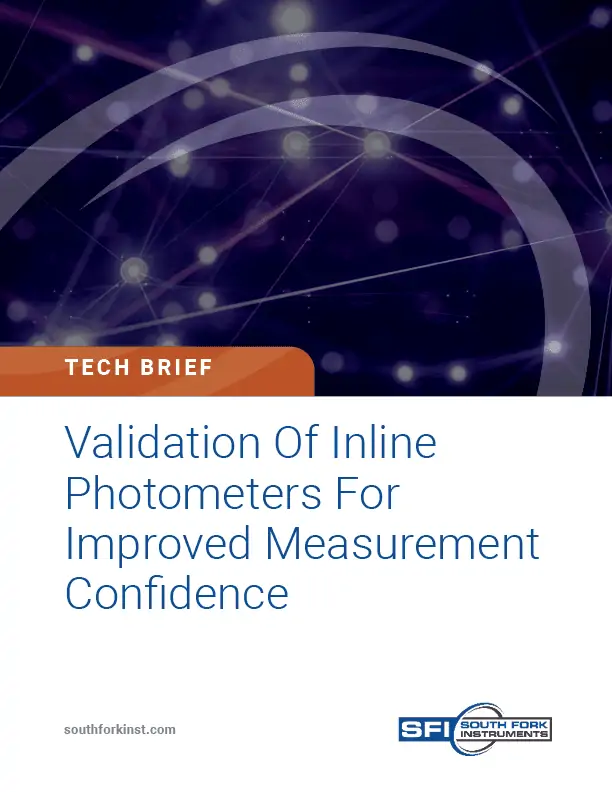
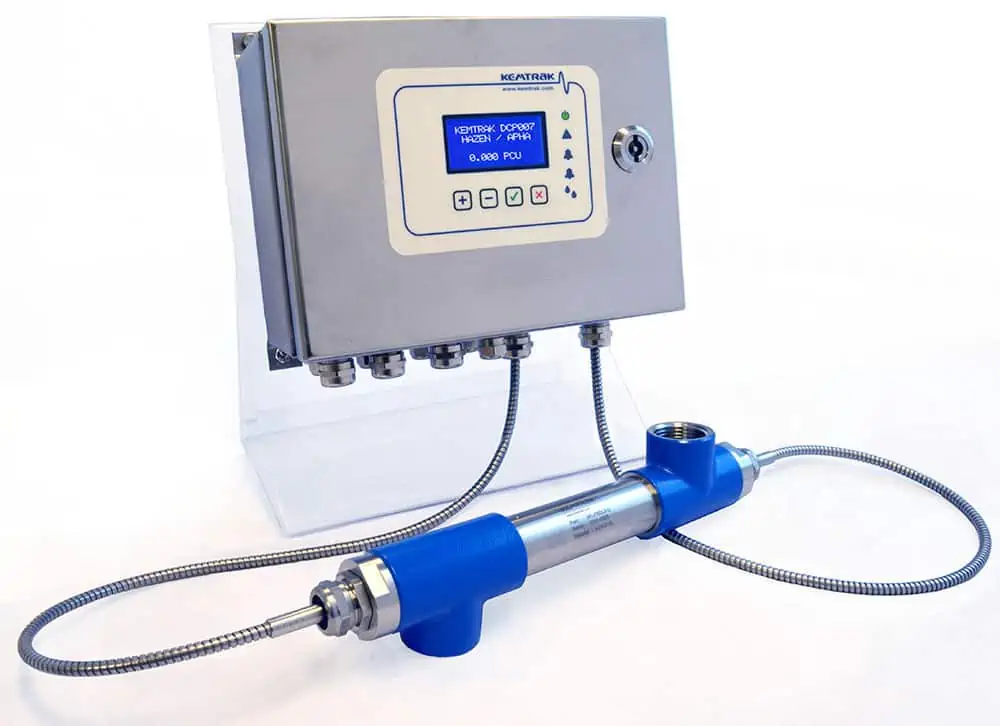
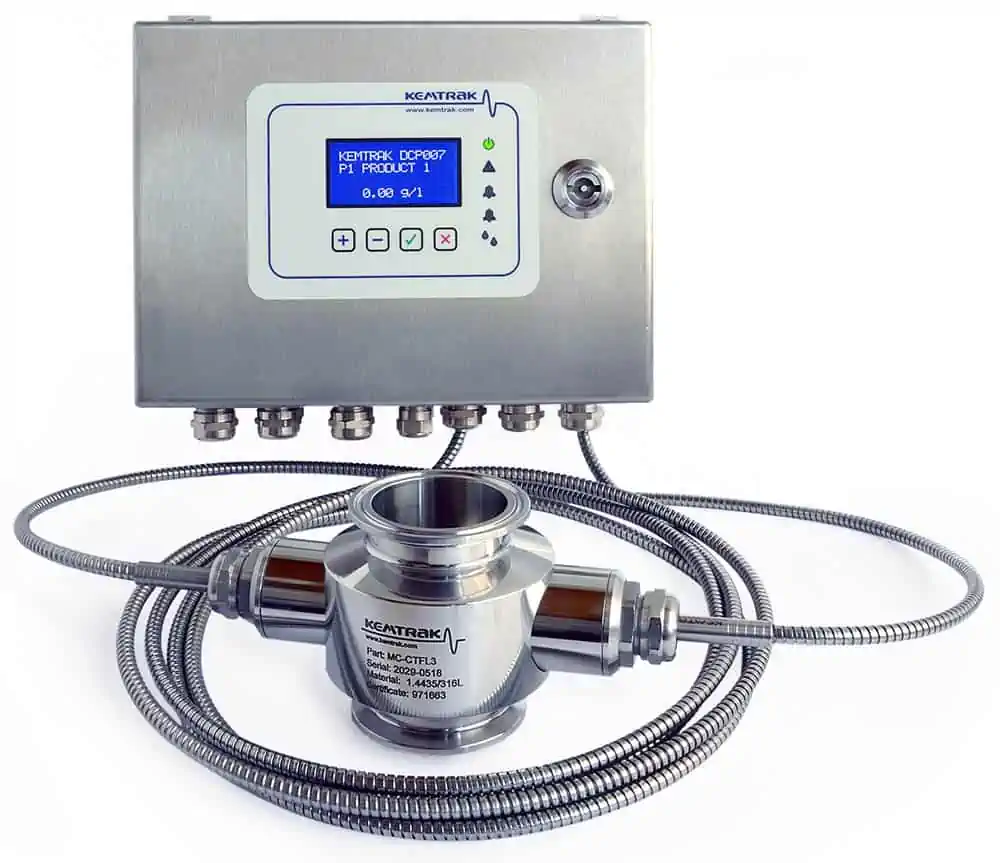
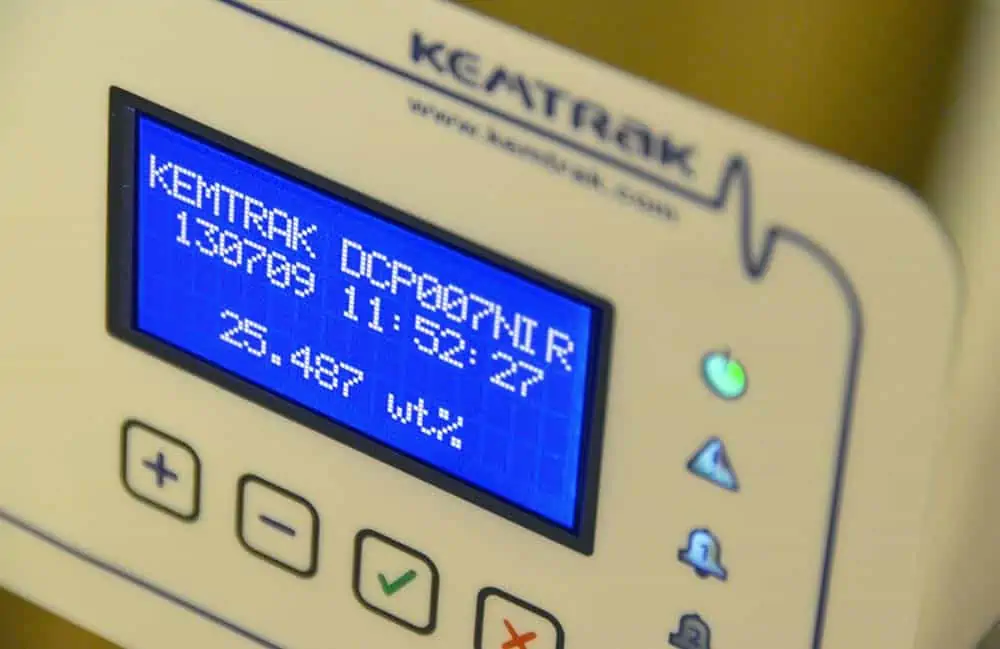

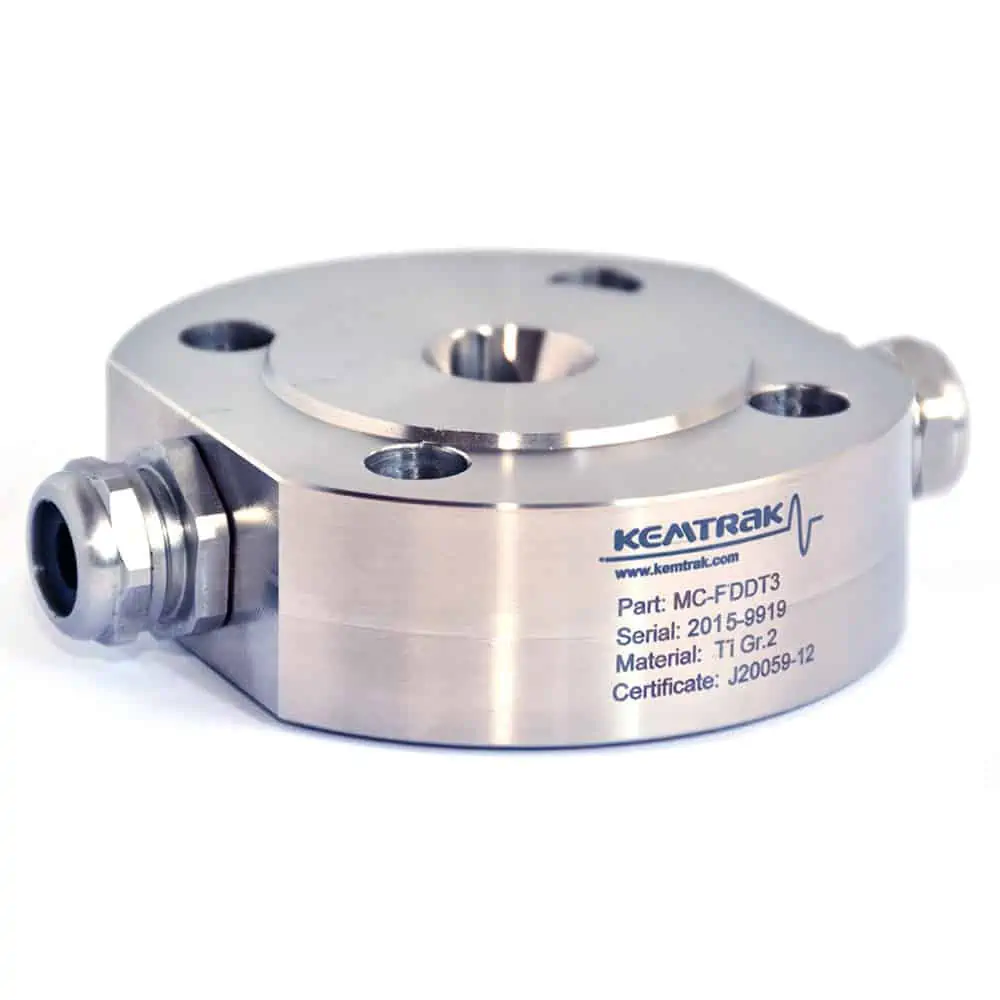
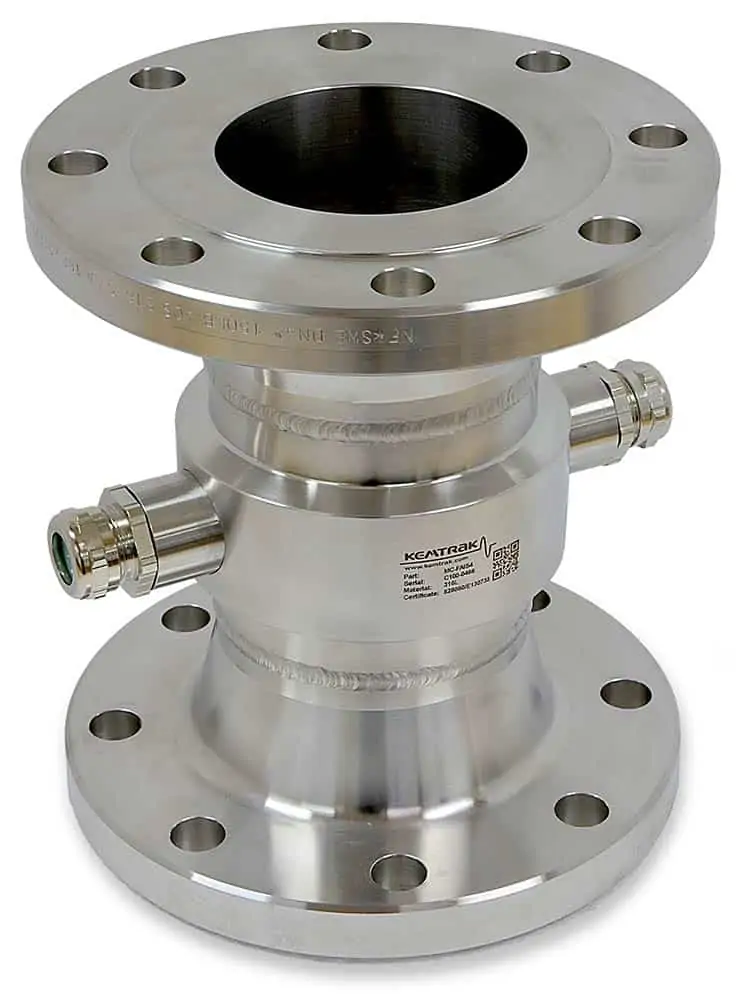

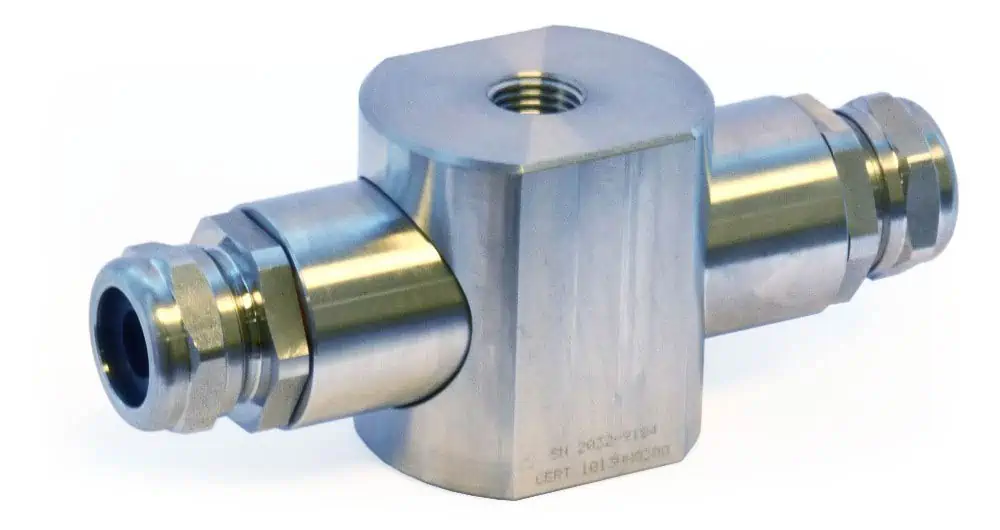
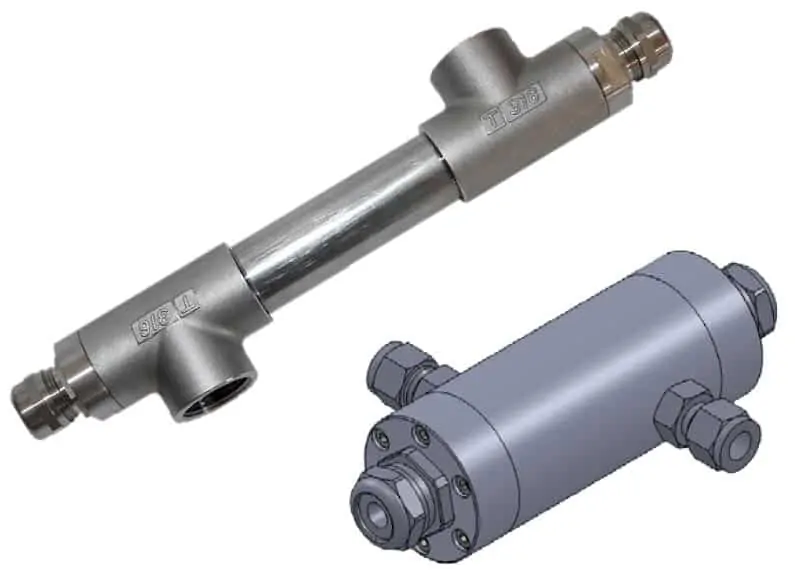
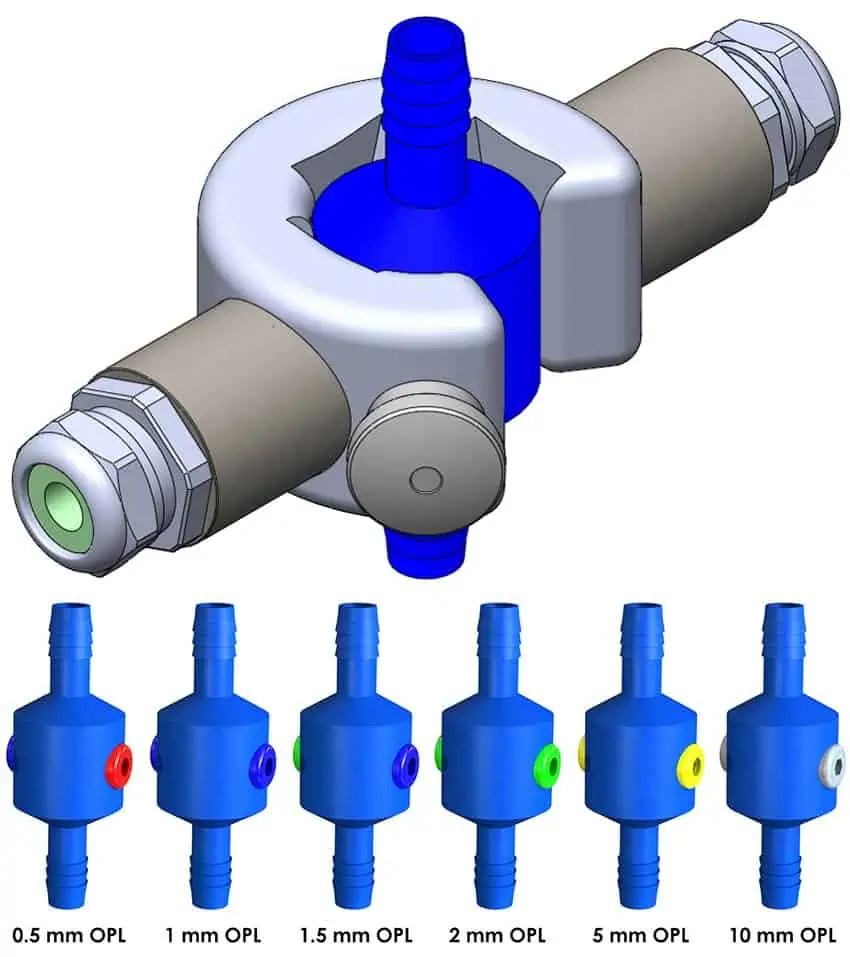
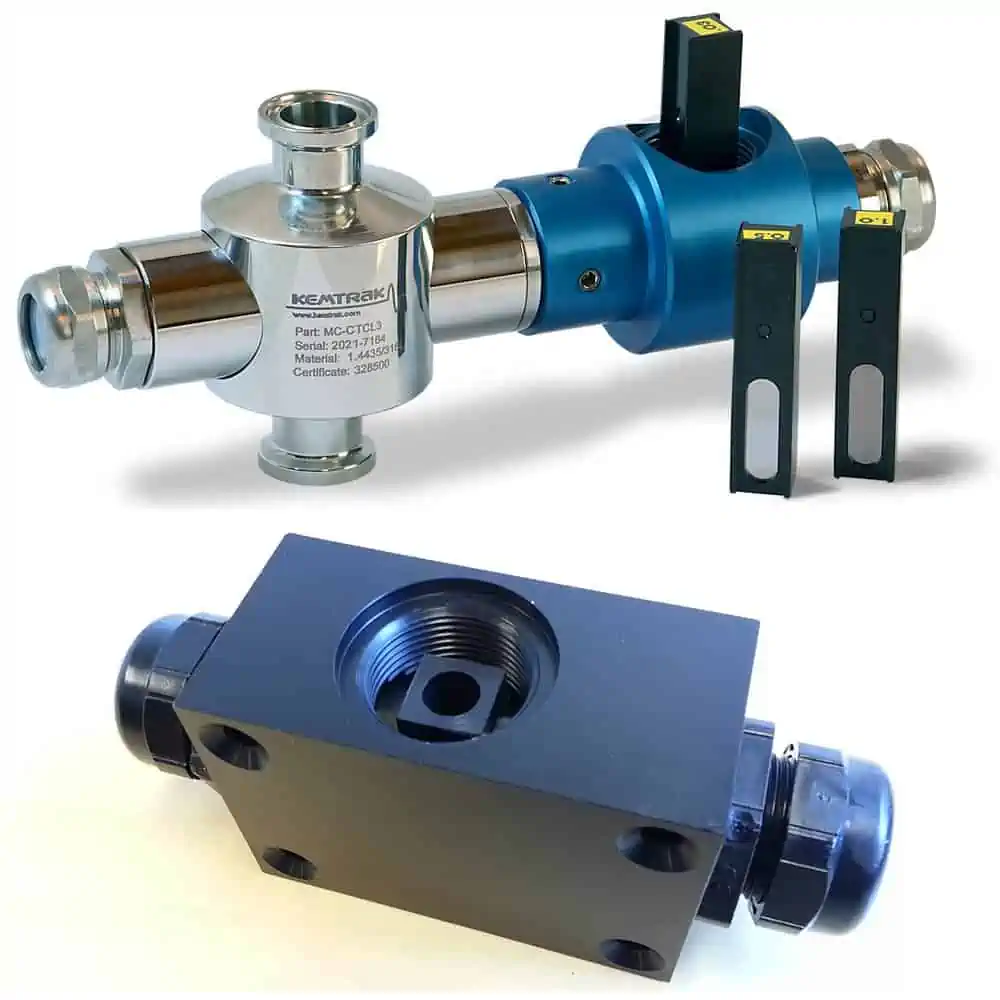
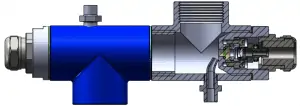 Kemtrak stainless steel long pass (OPL = 100mm) G 1” (DN 25) pipe thread measurement cell with optional G 1/8” (DN 6) sapphire window cleaning nozzles.
Kemtrak stainless steel long pass (OPL = 100mm) G 1” (DN 25) pipe thread measurement cell with optional G 1/8” (DN 6) sapphire window cleaning nozzles.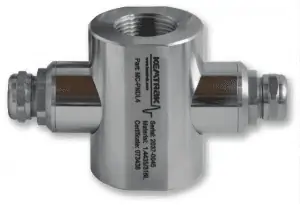 A typical measurement cell for this application is a 1” NPT type cell, like this Kemtrak stainless steel NPT 1” tapered pipe thread measurement cell with sapphire measurement window.
A typical measurement cell for this application is a 1” NPT type cell, like this Kemtrak stainless steel NPT 1” tapered pipe thread measurement cell with sapphire measurement window.